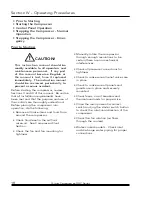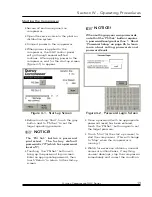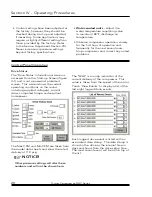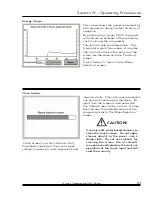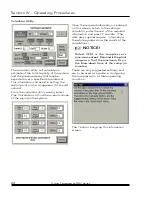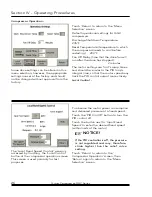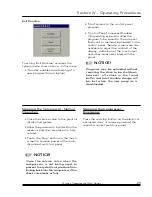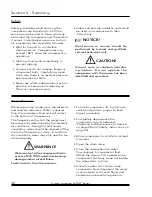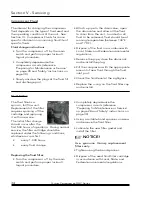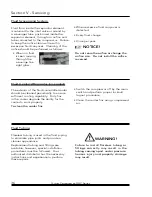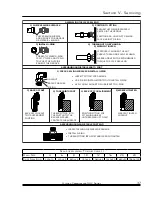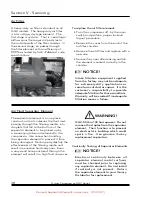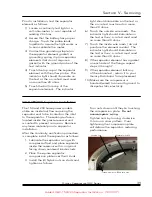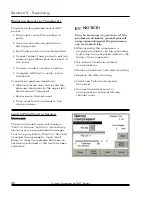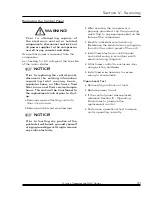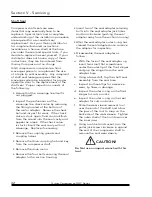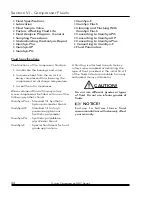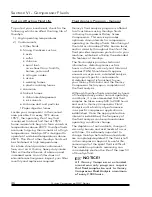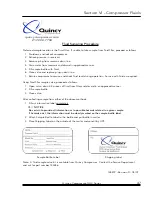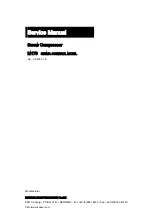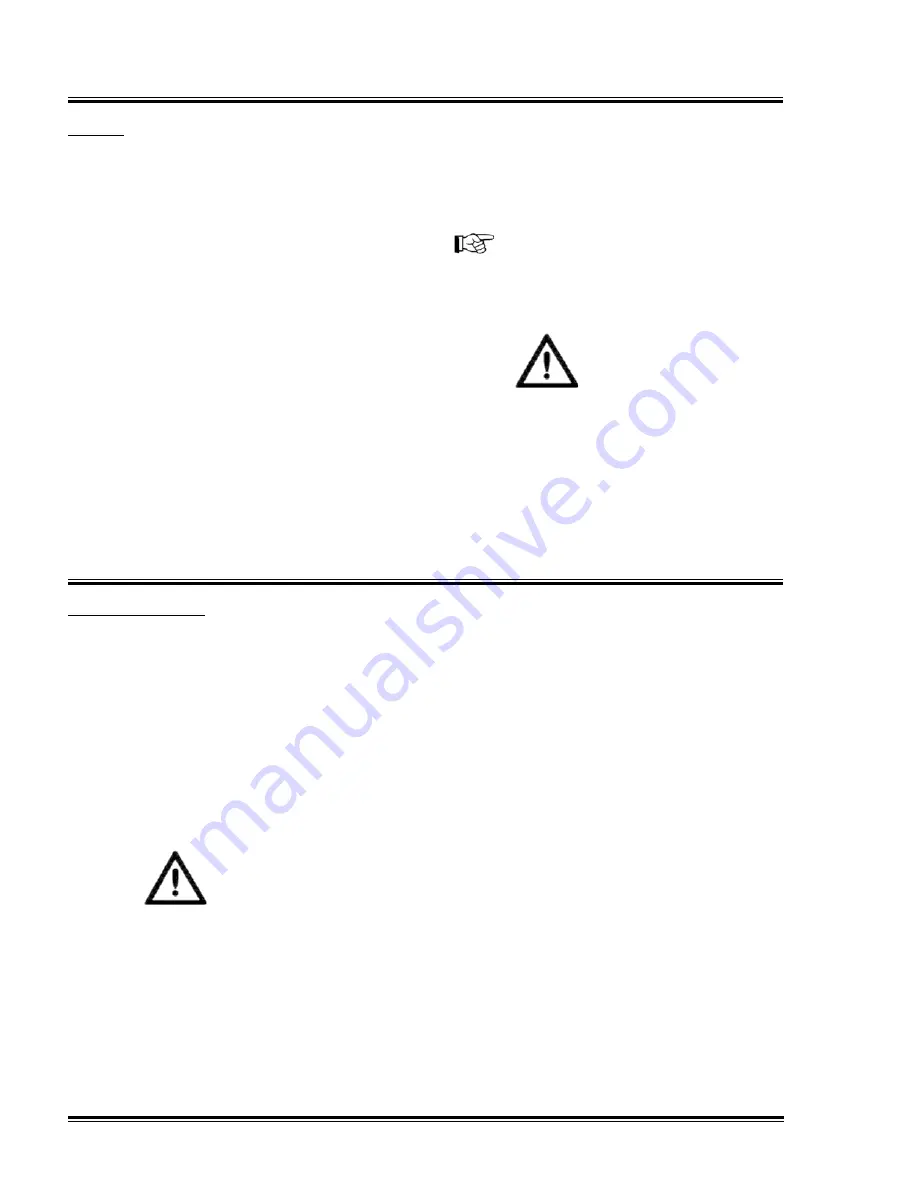
Section V - Servicing
Safety
Safety procedures while servicing the
compressor are important to both the
service personnel and to those who may
be around the compressor and the system
it serves. Listed below are some, but not
all, procedures that should be followed:
• Wait for the unit to cool before
starting service. Temperatures may
exceed 80°F when the compressor is
operating.
• Clean up fluid spills immediately to
prevent slipping.
• Loosen, but do not remove, flange or
component bolts. Carefully pry apart
to be sure there is no residual pressure
before removing bolts.
• Never use a flammable solvent such as
gasoline or kerosene for cleaning air
filters or compressor parts.
• Safety solvents are available and should
be used in accordance with their
instructions.
notiCe!
Maintenance or service should be
performed by trained and qualified
service technicians only.
Caution!
Unusual noise or vibration indicates
a problem. Do not operate the
compressor until the source has been
identified and corrected.
Water Removal
Water vapor may condense in the reservoir
and must be removed. Water is heavier
than the compressor fluid and will collect
at the bottom of the reservoir.
The frequency with which the water must
be removed is determined by the ambient
air conditions. During hot and humid
conditions, water should be drained off the
bottom of the reservoir daily. In cold and
dry conditions, water may only need to be
drained weekly.
Warning!
Water content in the compressor fluid in
excess of 200 PPM could cause bearing
damage and/or airend failure.
To drain water from the reservoir:
• Turn the compressor off by the main
switch and perform proper lockout/
tagout procedure.
• Completely depressurize the
compressor circuits (reference
‘Preparing for Maintenance or Service’
on page 28 and ‘Safety’ instructions on
page 30).
• Allow compressor to sit idle for at least
5 minutes.
• Open the drain valve.
• Close the valve when the water
flow changes to compressor fluid.
(When the drain is first opened some
compressor fluid may come out before
the water starts to flow.)
• Since this water will contain some
compressor fluid, dispose of the water
in accordance with Local, State, and
Federal environmental regulations.
32
Quincy Compressor-QGV Series
Summary of Contents for QGV-100
Page 2: ......
Page 6: ......
Page 17: ...Section II Description This page intentionally left blank Quincy Compressor QGV Series 11 ...
Page 74: ...Appendix A Dimensional Drawings QGV 50 air cooled 68 Quincy Compressor QGV Series ...
Page 75: ...Appendix A Dimensional Drawings QGV 50 water cooled Quincy Compressor QGV Series 69 ...
Page 76: ...Appendix A Dimensional Drawings QGV 75 100 air cooled 70 Quincy Compressor QGV Series ...
Page 77: ...Appendix A Dimensional Drawings QGV 75 100 water cooled Quincy Compressor QGV Series 71 ...
Page 78: ...Appendix A Dimensional Drawings QGV 150 200 air cooled 72 Quincy Compressor QGV Series ...
Page 79: ...Appendix A Dimensional Drawings QGV 150 200 water cooled Quincy Compressor QGV Series 73 ...
Page 89: ......

